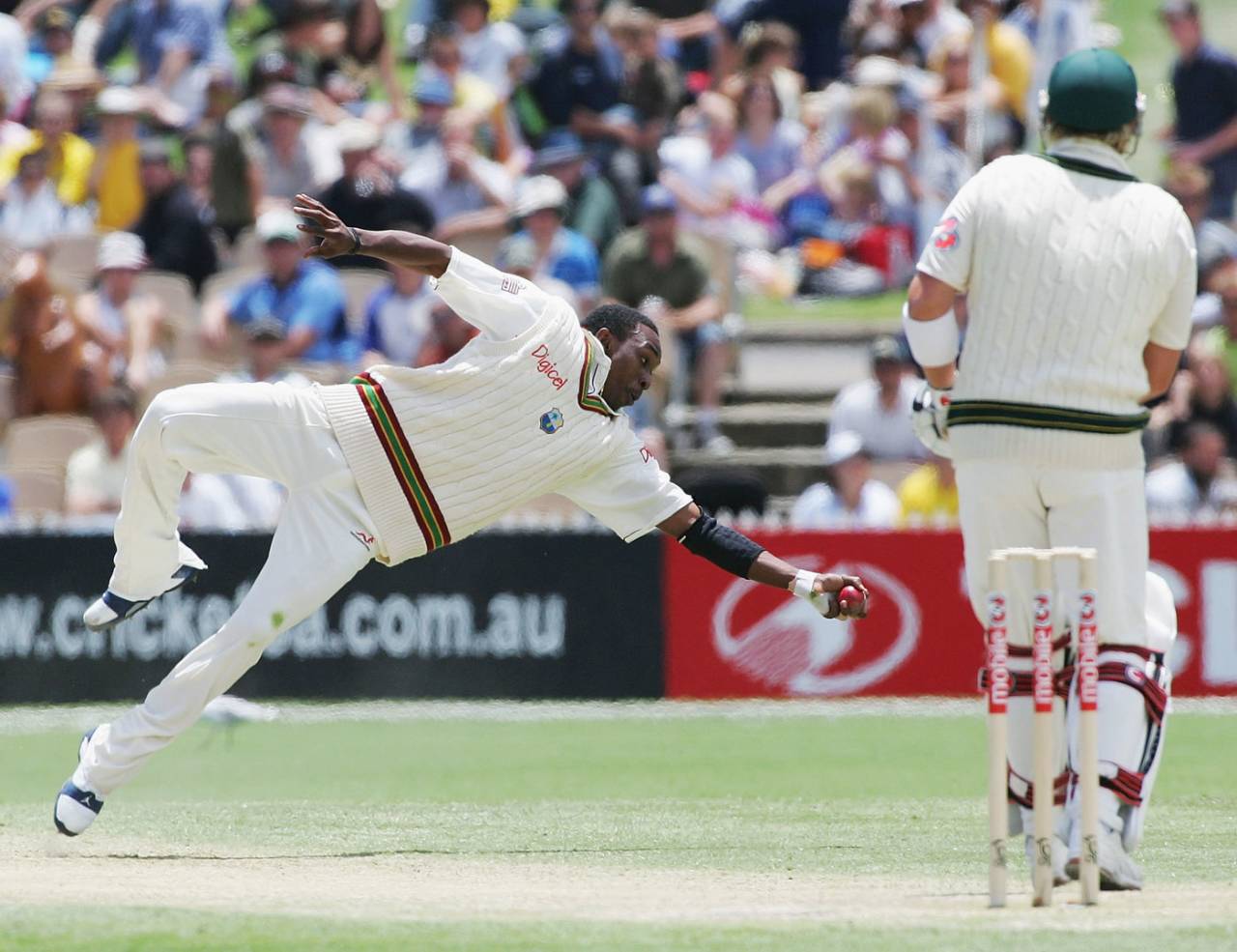Firstly, thanks to everyone who has taken the time to read my opening blog and an even bigger thanks to those who have also posted a comment. It's great to hear everyone's thoughts!
The photo I have chosen for this post was taken in November 2005, at the Adelaide Test during West Indies' tour of Australia. Despite already being two Tests down and going on to eventually lose the third and final Test, Dwayne Bravo had a very good match, contributing almost 100 runs and taking six first-innings wickets. This photo was the fifth and from my view of things, the most spectacular of those wickets. Having dismissed Adam Gilchrist earlier in the same over, Bravo was bowling to Shane Warne, who pushed the ball back on the up, but well to Bravo's left. Looking at replays I think it probably would have landed about another pitch width left of the playing strip. Bravo took a couple of quick steps to change direction and then dived full length to pull off a remarkable caught and bowled.
This photo is a good example of the most common way to photograph cricket action, sitting quite straight of the wicket, slightly to the left. To put it into fielding terms, sitting at a straight long-off or very fine leg (depending which end the bowler is coming from), watching a right-handed batsman.
I use Canon cameras and for cricket I generally use a 500mm lens for the action out in the middle. This photo was actually taken using a 600mm lens, as the Adelaide Oval is an unusual shape. It has quite short boundaries square of the wicket and very long ones straight. This means a slightly bigger lens is needed when sitting straight.
I shoot most deliveries, by staying focused on the batsman. The advantage of the working from this fairly straight position is that a right-arm bowler bowling over the wicket will run into frame on their follow through. This makes it easier to switch focus to them for a reaction to the batsman, whether that's an appeal, a celebration of a wicket, a catch or something else.
That's the idea, but in practice it doesn't always work out as planned! There are so many variables that can change. A left-handed batsman facing at the near end means the slip fielders can obscure the view. Bowlers coming around the wicket (or left-handers coming over) will change the angles and not run as nicely into frame on their follow through. A spin bowler's follow through is not as far as a fast bowler's. The list goes on!
So when it does all come together, it is all the more satisfying! For this photo, I started focusing on Warne. As he played the shot, Bravo ran into the left of my frame on his follow through. As the ball was headed in his direction I switched focus to him, just in time to photograph the dive and catch. What I like about it is that not only can you see Bravo taking the catch, you can also see Warne to the right. The photo tells the whole story of the moment; Shane Warne caught and bowled by Dwayne Bravo. It is also nice to take a photo like this because, as mentioned, there are so many variables that could have gone wrong.

